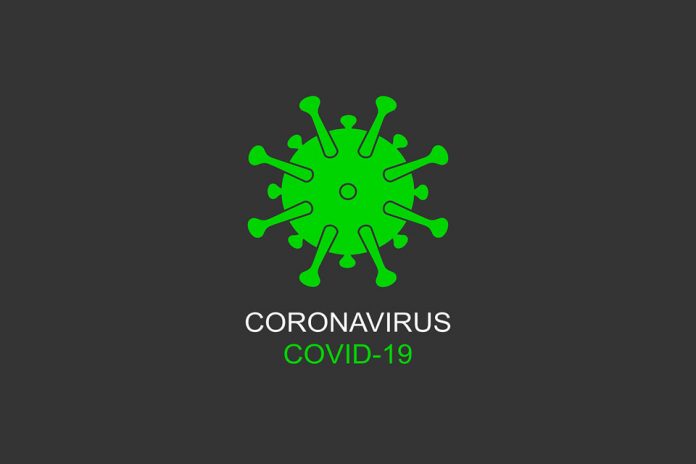The novel coronavirus–formally known as COVID-19–is bad news. It had been formally identified as a new virus only about a month before, but it has already infected 50,580 individuals and murdered 1,457 worldwide (as of this writing). Different sources gauge the mortality rate for COVID-19 at approximately 2% to 3 percent –but that could change as the virus rages on.
Of course, the world has been through other outbreaks that were much, much worse. As an example, the Spanish Flu of 1918 infected an estimated 500 million people and killed at least 50 million globally.
Now, considering the effects of a single virus against another is not just an apples-to-apples contrast. Nonetheless, it’s informative to put the current danger into some type of perspective.
To this end, let us look at five other viruses which, in their own ways, are significantly more dangerous than COVID-19.
Hepatitis
Viral hepatitis generated a yearly 1.34 million deaths worldwide in 2015. While deaths due to other infectious diseases have diminished, deaths as a result of viral hepatitis have really increased–by 22%–since 2000, according to a WHO report.
Although five kinds of hepatitis exist–including hepatitis A, D, and E–hepatitis C and B are responsible for 96% of all hepatitis-related deaths. The majority of these deaths are the result of chronic liver disease and primary liver cancer.
Approximately 325 million people, or 4.4% of the planet’s population, have allergies. And 1.75 million new infections of hepatitis C occur each year.
Despite a vaccine for hepatitis B and effective antivirals for hepatitis C, few individuals with the viral disease get a diagnosis because of restricted access to affordable hepatitis testing. (Only 9% of people with hepatitis B and 20 percent with hepatitis C have received a diagnosis, according to the WHO.) Therefore, treatment reaches only a small portion of the infected.
MERS
COVID-19 is not the sole coronavirus in town nowadays.
Since it was first identified in 2012, MERS has infected 2,499 individuals and caused 861 deaths globally, according to that the WHO. Certainly, that’s just a fraction of the numbers mentioned for COVID-19, but the difference is at the mortality rate. MERS has had a mortality rate as high as 37.2percent compared with the current estimated mortality rate of 2% to 3 percent for COVID-19.
Like COVID-19, disease from MERS coronavirus (MERS-CoV) reveals symptoms of fever, cough, and shortness of breath. Unlike COVID-19, MERS-CoV disease often stems from camels.
“Though most human cases of MERS-CoV ailments have been attributed to human-to-human infections in healthcare settings, present scientific evidence suggests that dromedary camels are a significant reservoir host for MERS-CoV and an animal origin of MERS disease in people,” the WHO cautioned.
No vaccine or specific treatment is presently available for MERS-CoV, however, a few are in development.
Ebola
Right now, the Democratic Republic of the Congo is fighting the world’s second-largest Ebola epidemic on record. As of this writing, 2,249 people have expired and 3,432 have been infected since the outbreak was announced in August 2018, based on the WHO.
Ebola is rare, but it has a higher mortality rate of approximately 50% (although that rate has ranged from 25% to 90 percent in previous outbreaks). 2014–2016 outbreak in West Africa was the biggest Ebola outbreak to occur: 28,610 individuals were infected and 11,308 died.
No proven treatment has been able to stop the virus, however, a range of blood, immunological, and drug therapies are in development.
HIV/AIDS
At the end of 2018, roughly 37.9 million people globally were living with HIV. In precisely the same year, 770,000 people died from HIV-related triggers and 1.7 million people were newly infected.
Since the virus was discovered, over 32 million people worldwide have died as a result of HIV, in accordance with the WHO. Although it continues to be a significant global public health issue, “HIV infection has become a familiar chronic health state, allowing people living with HIV to lead long and wholesome lives,” the company noted.
For instance, 62% of adults and 54 percent of children living with HIV in low- and – middle-income countries are currently receiving antiretroviral treatment, which has been the main cure for the virus.
More good news: New HIV infections fell by 37% and HIV-related deaths dropped by 45% between 2000 and 2018, with an estimated 13.6 million lives saved due to antiretroviral therapy.
Despite the fantastic news, now isn’t the time to become complacent. Of the estimated 1.1 million Americans living with HIV in the US, roughly 14% (or 1 in 7) of these don’t understand it and have to get tested. Meanwhile, more than 38,000 new HIV infections occur in the USA each year.
Influenza
While COVID-19 has caused a fantastic deal of anxiety and concern, there is a more widespread and more deadly virus happening — influenza. Worldwide, the flu causes about 3 to 5 million cases of severe illness and about 290,000 to 650,000 deaths each year, based on the latest estimate.
In the United States, at least 22 million people have gotten the flu in the 2019-2020 year and 12,000 have died from it–such as at least 78 children–based on the most recent report by the CDC.
While there’s no cure or annual vaccine for COVID-19 such as there is for the flu, COVID-19 has justified a high level of caution and extensive containment processes. If seasonal influenza were granted as much esteem, fewer people would probably die from it, experts say.
“Which virus really is a threat? It is the one we’re all familiar with and the one people have a tendency to not be scared of,” said vaccine and infectious illness immunologist Steven Szczepanek, Ph.D., MS, assistant professor, Pathobiology and Veterinary Science, University of Connecticut, Storrs, CT..













